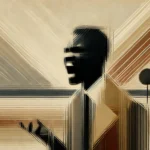Want to do more? Do it one thing at a time
“Many executives view multitasking as a necessity in the face of all the demands they juggle, but it actually undermines productivity. Distractions are costly: A temporary shift in attention from one task to another – stopping to answer an e-mail or take a phone call, for instance – increases the amount of time necessary to finish the primary task by as much as 25%, a phenomenon known as “switching time.” It’s far more efficient to fully focus for 90 to 120 minutes, take a true break, and then fully focus on the next activity.”
T. Schwartz and C. McCarthy, Manage Your Energy, Not Your Time (Harvard Business Review October 2007)
Schwartz and McCarthy are putting a modern spin on ancient spiritual knowledge. Great thinkers and mystics have told us since time immemorial: if you want to do things properly, focus on what you’re doing.
I wrote in another place at another time: “Our typical day is spent flitting from task to task, dividing our attention, keeping several balls in the air at the same time, like circus jugglers. This is the disease of our age, which has been aptly labelled “continuous partial attention” by Linda Stone, a former Microsoft executive, and the “Age of Interruption” by renowned columnist Thomas Friedman – the “malady of modernity”.
To do anything well, you have to focus your mental resources onto the task at hand – like a lens focusing light energy onto a single point. Nothing great is done in disjointed bits; our best work is done when we are completely immersed in the task, not when we are giving it fleeting attention.
Schwartz and McCarthy tell us of executives who have learnt this important lesson – and of the tricks and rituals they have devised to allow them to concentrate amidst the bedlam of modern corporate life. One, a senior manager at Wachovia, leaves his desk and goes to a quiet conference room whenever he has an important task to complete. He reports that he now gets reports written in a third of the time that he used to take when he was multi-tasking.
Another executive, with Ernst & Young, used to answer e-mails all day long, as soon as they ‘pinged’ on the computer. Now, he has set up two times in the day, of 45 minutes each, where he does nothing but read and reply to e-mails. Whereas previously he could never clear his backlog, he now manages to clear his inbox every time he opens it – but just twice a day.
All similarly enlightened executives have their own practices. Some make sure that they spend the first hours in the morning working on the most important issue they have to address – not the most urgent. That way they make time for strategic, rather than just immediately pressing issues. They also use the first reservoir of energy of the day for the most important things, rather than leaving them for the end. Others make sure they have a time in the day when they switch everything off and simply go for a walk, to rest and revive.
Undivided attention is the secret of success, without a doubt. All of life’s great achievements come through concentration and focus. We achieve nothing by doing less and less of more and more.

Buy Sunny Bindra's book
UP & AHEAD
here »
Popular Posts
- Who owns the time in your life?September 29, 2024
- Why 60 per cent is often an excellent result in lifeSeptember 22, 2024
- Customer complaints are as old as humanityOctober 6, 2024
- Why the lazy may be your best innovatorsOctober 13, 2024
- The struggle for meaning is both peculiar and personalOctober 20, 2024











